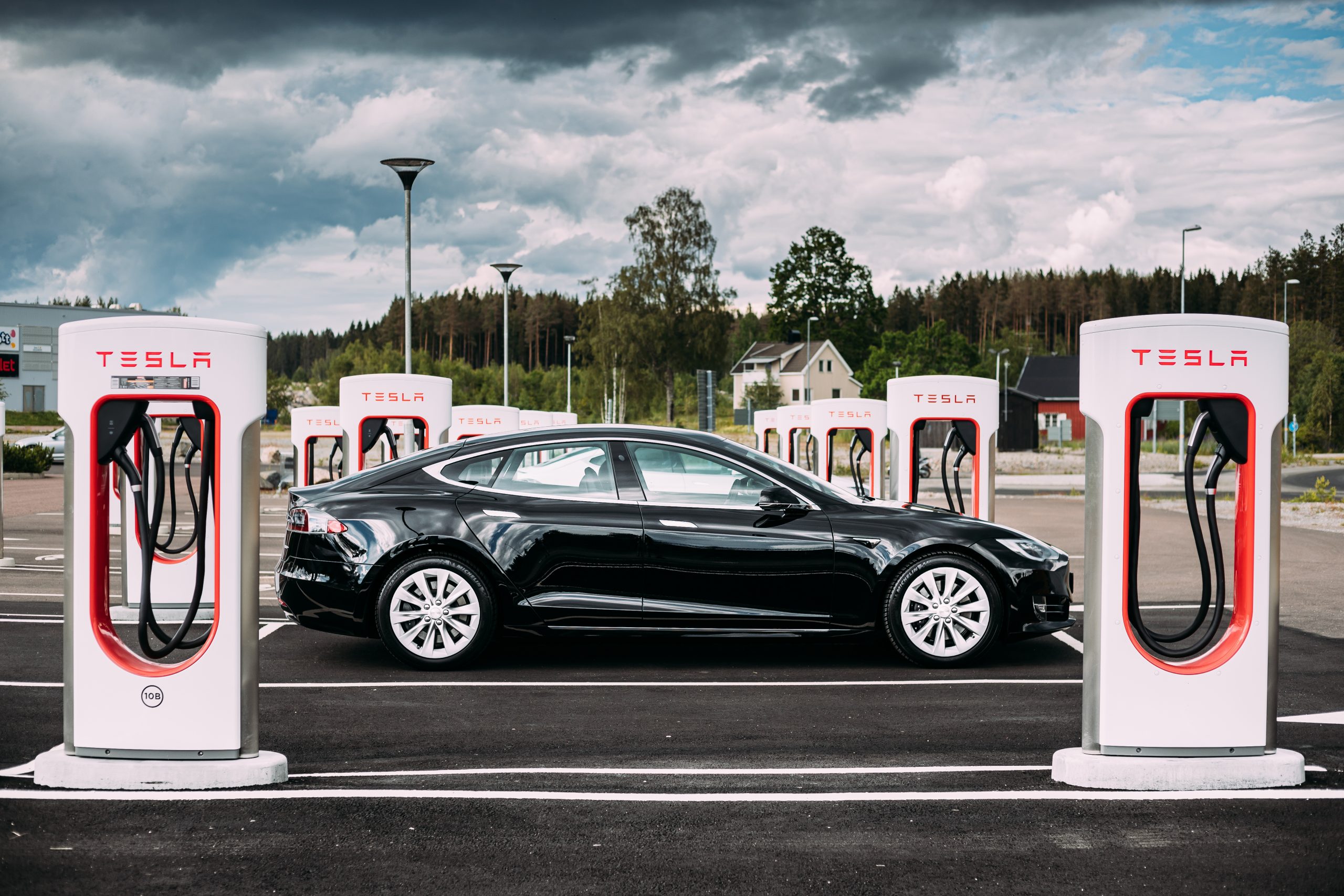The Electric Vehicle Race: China's Advance And America's Response

Table of Contents
China's Dominance in the Electric Vehicle Market
China's leading position in the electric vehicle race isn't accidental; it's the result of a strategic, multi-pronged approach. This dominance stems from significant government support, a vertically integrated supply chain, and a commitment to technological innovation.
Massive Government Subsidies and Incentives
The Chinese government has poured billions into its EV sector, creating a favorable environment for domestic manufacturers to thrive. This massive investment isn't limited to production; it includes extensive development of charging infrastructure and substantial incentives for consumers.
-
Scale of Investment: Billions of dollars have been allocated to research and development, manufacturing subsidies, and the construction of a nationwide charging network. This level of commitment dwarfs similar efforts in other countries.
-
Specific Subsidies and Tax Breaks: Chinese EV buyers often receive significant government subsidies, reducing the upfront cost of purchasing an electric vehicle. Manufacturers also benefit from tax breaks and other financial incentives.
-
Impact on Industry Growth: These policies have dramatically increased the affordability of EVs, fueled domestic production, and spurred the creation of a robust and competitive supply chain within China.
-
Bullet Points:
- Increased affordability of electric vehicles for consumers.
- Boosted domestic production of EVs and related components.
- Creation of a comprehensive and efficient supply chain.
A Vertically Integrated Supply Chain
China's control over much of the EV supply chain, from raw materials to battery production and vehicle manufacturing, gives it a crucial competitive advantage. This vertical integration allows for greater cost efficiency and quicker innovation cycles.
-
Control over Key Resources: China dominates the production of key EV components, including batteries and rare earth minerals crucial for battery manufacturing. This control minimizes reliance on foreign suppliers.
-
Advantages of Vertical Integration: This approach streamlines production, reduces transportation costs, and allows for faster responses to market changes and technological advancements.
-
Comparison to Other Countries: In contrast, many other countries, including the US, have more fragmented supply chains, making them more vulnerable to disruptions and increasing costs.
-
Bullet Points:
- Cost efficiency through streamlined production.
- Reduced reliance on foreign components and potential supply chain disruptions.
- Quicker innovation cycles due to better coordination between different stages of production.
Technological Advancements and Innovation
China is not only producing large volumes of EVs but is also actively pushing the boundaries of EV technology. Significant advancements in battery technology, charging infrastructure, and autonomous driving systems are emerging from Chinese companies.
-
Battery Technology: Chinese manufacturers are at the forefront of developing higher-density batteries, increasing the driving range of EVs. They are also exploring innovative battery chemistries and fast-charging technologies.
-
Charging Infrastructure: China has invested heavily in building a nationwide network of fast-charging stations, making long-distance EV travel more practical.
-
Autonomous Driving: Several Chinese companies are leaders in developing advanced driver-assistance systems and autonomous driving technologies for electric vehicles.
-
Bullet Points:
- Improved battery density leading to increased range and performance.
- Rapidly expanding network of fast-charging stations across the country.
- Significant advancements in AI-powered driver-assistance and autonomous driving systems.
America's Response to the Electric Vehicle Challenge
The United States recognizes the importance of the electric vehicle race and is actively working to bolster its domestic EV industry, though it faces significant hurdles.
The Biden Administration's EV Initiatives
The Biden administration has implemented several policies to promote the growth of the US EV sector. These initiatives focus on increasing domestic production, expanding charging infrastructure, and incentivizing EV adoption.
-
Policies and Investments: Significant investments are being made in battery manufacturing facilities, research and development, and the expansion of the charging network.
-
Infrastructure Bill's Impact: The bipartisan infrastructure bill includes substantial funding for the deployment of thousands of new EV charging stations across the country.
-
Tax Credits and Incentives: Tax credits and other financial incentives are offered to encourage consumers to purchase EVs and to support domestic manufacturing.
-
Bullet Points:
- Investments in domestic battery manufacturing plants.
- Expansion of the nationwide network of EV charging stations.
- Consumer tax credits and other purchase incentives.
Challenges Facing the American EV Industry
Despite significant efforts, the US EV industry faces several challenges that hinder its ability to compete effectively with China.
-
Supply Chain Vulnerabilities: The US currently relies heavily on foreign sources for many key EV components, making it vulnerable to supply chain disruptions.
-
Need for Increased Investment: Greater investment is needed in battery technology and manufacturing to achieve cost parity and improve performance compared to Chinese competitors.
-
Workforce Training: There’s a need for significant investment in training and education to develop a skilled workforce capable of supporting the growth of the EV sector.
-
Bullet Points:
- Dependence on foreign sources for raw materials and components.
- Need for further investment in battery technology and manufacturing capacity.
- Addressing skilled labor shortages to support EV manufacturing and maintenance.
Private Sector Investment and Innovation
American automakers and private companies are playing a vital role in the electric vehicle race. Significant investments are being made in battery technology, charging infrastructure, and innovative EV designs.
-
Major Automakers' Roles: Companies like Tesla, Ford, and General Motors are making substantial investments in EV development and production.
-
Private Sector Investment: Venture capital and private equity are fueling innovation in battery technology and charging solutions.
-
American Innovation: The US remains a center for innovation in areas like battery chemistry, charging technology, and autonomous driving.
-
Bullet Points:
- Tesla's continued market leadership and technological advancements.
- Significant EV investments from Ford and General Motors.
- Strong private sector investment in battery technology and charging infrastructure.
Conclusion
The electric vehicle race is a crucial contest for technological and economic leadership. China's early and aggressive investment in the EV sector, coupled with its vertically integrated supply chain and focus on innovation, has given it a significant head start. However, the United States is responding with substantial policy initiatives and private sector investment. The outcome will depend on the ability of the US to overcome its supply chain challenges, foster innovation, and effectively implement its ambitious EV plans. The future of this electric vehicle race will be shaped by continued technological advancements, government policies, and the choices of consumers. Stay informed about the latest developments in the electric vehicle race to understand the future of transportation and global economic competition.

Featured Posts
-
 Kentucky Derby 2024 What You Need To Know Before Race Day
May 04, 2025
Kentucky Derby 2024 What You Need To Know Before Race Day
May 04, 2025 -
 Expert Ufc Des Moines Predictions And Analysis
May 04, 2025
Expert Ufc Des Moines Predictions And Analysis
May 04, 2025 -
 Singapore Election Assessing The Political Landscape
May 04, 2025
Singapore Election Assessing The Political Landscape
May 04, 2025 -
 Gibonni U Subotici Promocija Knjige Drvo I Koncert 29 Maja
May 04, 2025
Gibonni U Subotici Promocija Knjige Drvo I Koncert 29 Maja
May 04, 2025 -
 Bradley Cooper And Gigi Hadid Relationship Confirmed Via Instagram Kissing Photo
May 04, 2025
Bradley Cooper And Gigi Hadid Relationship Confirmed Via Instagram Kissing Photo
May 04, 2025
